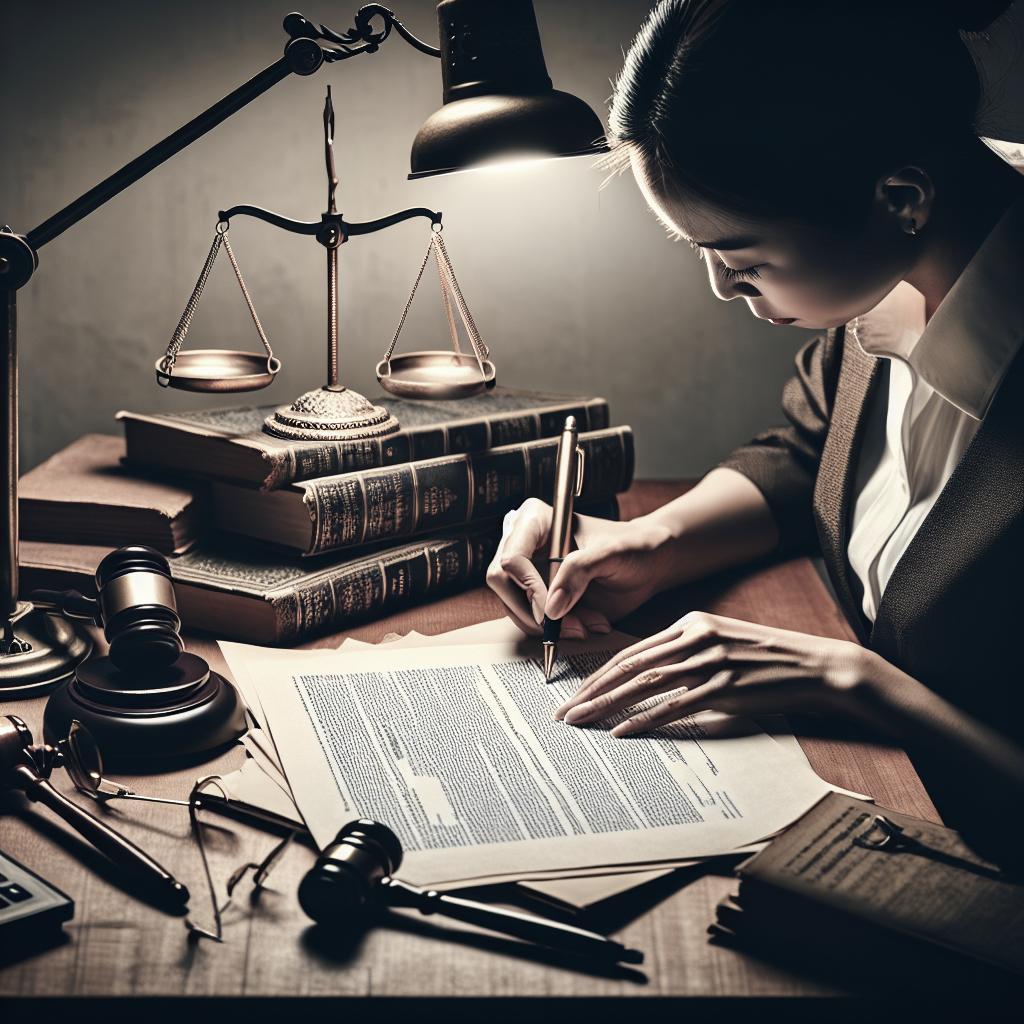“`html
How to Handle a Personal Injury Case
Handling a personal injury case can be daunting, but with the right knowledge and steps, you can navigate through it effectively. This blog post provides a step-by-step guide to managing such cases in Ontario. We’ll delve into the local legal framework, the importance of seeking immediate medical attention, and how to document the incident thoroughly. Additionally, we’ll discuss notifying the appropriate parties, consulting with an attorney, evidence preservation, damage calculation, and preparing for settlements or trials. Whether you’re dealing with a minor injury or something more serious, these insights will equip you with the tools needed to manage your case efficiently and effectively.
1. Understand the Ontario Legal Framework
Ontario’s personal injury legal framework is designed to protect individuals who have been injured due to someone else’s negligence. This includes compensating the injured parties for their injuries, lost wages, and other related damages. Understanding the statutory limitation period, which is typically two years from the date of the injury, is crucial. Missing this deadline can mean forfeiting your right to claim compensation.
Moreover, in Ontario, personal injury cases often involve the Insurance Act. Knowing the specific terms, such as the minimum liability insurance requirements for automobile accidents, can aid in understanding the coverage and options available for your case. Familiarize yourself with these legal nuances to ensure your rights are protected and that you are fully prepared for any potential legal proceedings.
2. Seek Immediate Medical Attention
The first step following a personal injury is to seek immediate medical assistance. Not only is this crucial for your health and safety, but medical records also play a vital role in substantiating your claims. A thorough medical examination will help identify any visible injuries and underlying conditions that may not be immediately apparent.
Delaying medical evaluation can also hinder your claims process. Insurance companies may argue that failure to obtain immediate care implies that your injuries were not severe. To avoid such complications, ensure that every medical visit and procedure is meticulously documented as part of your evidence.
3. Document the Incident Thoroughly
One of the most critical steps in managing a personal injury case is documenting the incident comprehensively. Begin by creating a detailed account of the event, including the date, time, location, and all the circumstances leading up to the accident. If possible, gather witness statements and contact information to support your claim.
Photographic evidence is also invaluable. Take clear photos of the accident scene, visible injuries, and any property damage. Such documentation can be crucial in corroborating your story and providing a visual reference for what transpired. Keeping a diary of your recovery journey, highlighting how the injury affects your daily life, can further support your case.
4. Notify the Appropriate Parties
Notifying the appropriate parties following an injury is essential for a smooth claims process. Whether it’s an employer, landlord, or insurance company, promptly informing them about the incident ensures that your rights are protected. Be prepared to furnish them with necessary documentation and details of the incident.
In Ontario, if the injury occurred in a municipality, you might need to provide written notice within a specific timeframe, often as short as ten days. Failing to do so could impact your ability to claim compensation, making it vital to act quickly and adhere to any notification requirements that may apply.
5. Consult with a Personal Injury Lawyer
While handling the aftermath of a personal injury can be overwhelming, consulting with a seasoned personal injury lawyer can make a significant difference. An attorney can provide expertise, guide you through the legal process, and help you avoid common pitfalls. Their knowledge of local laws and experience negotiating with insurance companies can strengthen your case.
When seeking legal counsel, choose a lawyer with a proven track record in personal injury cases and an understanding of Ontario’s specific legal environment. They can help you understand your rights, evaluate the merits of your case, and decide whether settling or going to trial is the best course of action.
6. Preserve Evidence
Preserving evidence is essential in substantiating your personal injury claim. Alongside medical records and documentation of the incident, maintaining physical evidence, such as clothing worn during the accident, could be crucial. Secure all forms of communication with insurance representatives, including emails and letters.
Should your case proceed to trial, having well-organized evidence can be pivotal in its outcome. Preserve any potential video footage, such as security camera recordings, and obtain copies of any official reports, including police and accident reports. Such evidence solidifies your claims and enhances the credibility of your testimony.
7. Calculate Damages
The process of calculating damages in a personal injury case involves considering both economic and non-economic factors. Economic damages cover tangible financial losses, such as medical bills, rehabilitation costs, and lost earnings. Keep an accurate record of all expenses attributable to the injury.
Non-economic damages, on the other hand, compensate for intangible losses, such as pain and suffering, emotional distress, and diminished quality of life. Assigning a monetary value to these aspects can be challenging, but a skilled personal injury lawyer can provide guidance in determining fair compensation.
8. Prepare for Settlement Negotiations or Trial
Preparing for settlement negotiations or a trial requires a comprehensive understanding of your case and its potential outcomes. Settlements are often more time-efficient, but they require a willingness from both parties to compromise. Be prepared to engage in negotiations, which often involve lengthy discussions and counteroffers.
If settlement negotiations do not yield satisfactory results, proceeding to trial may be the next logical step. This requires thorough preparation and gathering strong evidence to support your claims. An experienced lawyer plays a vital role in presenting your case convincingly in front of a judge or jury.
Lessons Learned
| Step | Key Actions |
|---|---|
| Understand the Ontario Legal Framework | Familiarize with statutory limitations and relevant laws. |
| Seek Immediate Medical Attention | Obtain medical treatment promptly and document visits. |
| Document the Incident Thoroughly | Record all details, gather witness statements, and take photos. |
| Notify the Appropriate Parties | Inform involved parties and adhere to notification requirements. |
| Consult with a Personal Injury Lawyer | Seek legal advice and hire a lawyer with relevant experience. |
| Preserve Evidence | Maintain records, physical evidence, and communication logs. |
| Calculate Damages | Assess economic and non-economic damages. |
| Prepare for Settlement Negotiations or Trial | Engage in negotiations or prepare for court proceedings. |
If you didn’t like this article or have suggestions for improvement, please let us know why, and we’ll aim to make it better!
“`


